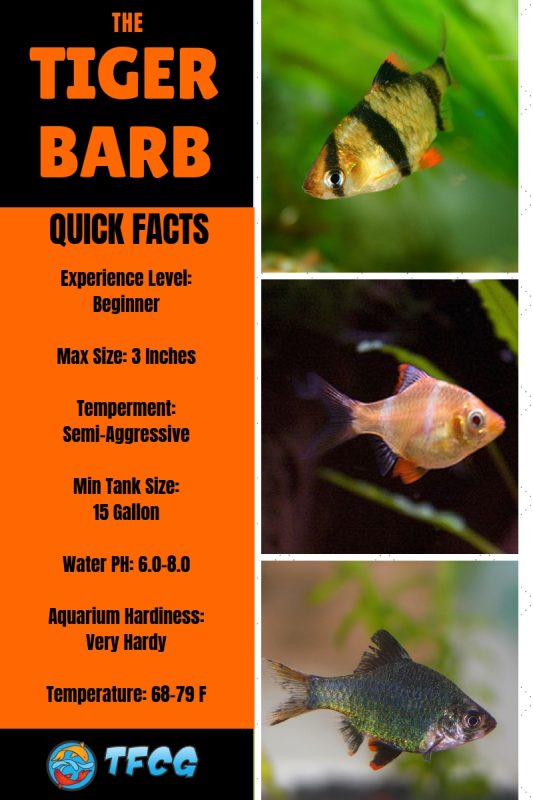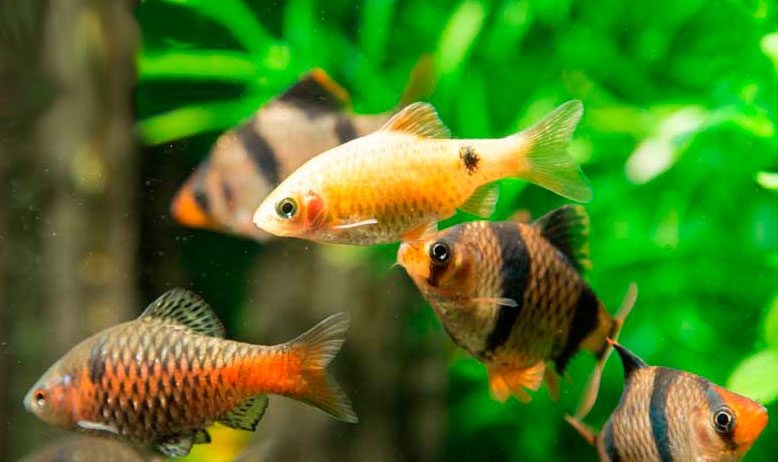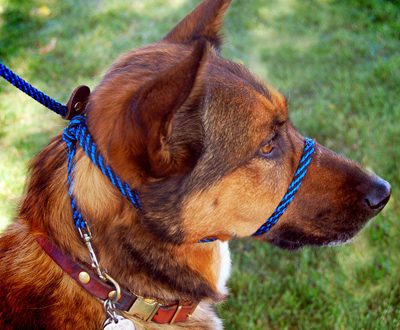
د باربس کب: ډولونه، مطابقت، ساتنه، پاملرنه، تکثیر
Barbus fish is an aquarium fish that is just perfect for those who dream of creating a water world, but do not yet have experience in this. However, experienced aquarists also like it. They give offspring without difficulty, they are quite hardy – that is, even without skills it is easy to cope with them. However, advice on keeping barbs will obviously not harm our readers.
کړی
Barbus fish: what types can distinguish
So, what does it look like this fish? Her body is elongated and muzzle is pointed. tail fin has a two-blade shape. Scatter in size is large enough: a barbus can reach as little as 5 cm, and whole 35 cm! It all depends on the type, as in the case with color: monotony, spotting, stripe – optional buy any barb.
А Now let’s talk more about how distinguish these fish depending on type:
- Sumatran Barbus is this fish barb is considered the most famous species. In the common people also known as “fish in a vest” and “striped robber”. Last thing a rather apt name given not only for the striped color, but also for the combat character. These barbs are really unbearable – if they are not kept in a flock, then begin to take out the negativity on others smaller fish species. Concerning bands, then, indeed, regardless from the general color of the body – and he can vary from silver to yellow – there are always stripes. They are in any case they cross the body vertically from tail to head. There are four such lanes. They are always black, but they exist also albino barbs, in which the body is light beige or yellow, and stripes are milky. In normal individuals there is also a red tail – see it can be on the fins, tail, and during spawning, males are also on their heads. This small fish is usually grows up to 7 cm.
- Mutant – or “mossy barb” is a product selection of the previous species. Generally, the mutant is really similar to the striped one a robber both in character and outwardly. The only difference is the stripes. They are expanded so much in the process selections that are mixed. Thanks to this fish now has a black-greenish color. From some angles the scales begin to cast metal. On the opinion of many, together with the Sumastran fish and albinos mossy barbs look especially impressive.
- fiery fish – and it is already larger, as it can grow even up to 15 cm! Although the individuals which stop growing at around 8 cm are also found. Exactly fiery barbus began to be the first to withdraw at home. Differs in bright golden red and clear traced scales. On fins you can see the dark edging, and next to the tail – one spot of dark shade. It is believed that the fire barbus, albeit as mobile as the previous ones species, but more peaceful.
- Cherry view – a miniature fish, the length of which does not exceed 5 cm. However, it looks extraordinarily effective thanks to raspberry or bright red. Remarkably, that the tail and fins merge in tone with the main body. The scales are beautiful shimmer, sometimes standing out more dark tone. hallmark is also a dark horizontal stripe that runs from head to tail. On the lower jaw, one can see a couple of mustaches. Torso small curved arch. Pretty peaceful fish.
- Denison – they have the most elongated body, than other fish. size can reach 9-11 cm. Silvery scales, however, on the sides are contrasting stripes of black and red. Tail itself is transparent, but also on it contrasting blotches flaunt in yellow and black spots. Dorsal the fin is colored red. It is recommended to purchase such fish exclusively for experienced aquarists. The thing is, that denisons are demanding in content and are expensive due to their scarcity.
- Scarlet barbus – it is also called “Odessa”. Small but extremely attractive thanks to its color, a fish. Body in overall silvery, but along it a fairly wide alley passes strip. The tail is also scarlet. Around scales edging can be seen. Very mobile pet and generally peaceful. Although sometimes it can show character!
- Shark barbus – it really reminds shark on the structure of the fins. A form his body is torpedo-shaped. It is also distinguished by large black eyes and black edging of all fins. If the conditions of detention good, such a pet is able to grow up to 30 cm! Despite the resemblance to a shark, This barb is unusually peaceful. However, unfortunately, it occurs in rarely in nature.
- Schwanefelds – fish of impressive size. They are can reach 30 cm! And let the color they are gray, red-black fins stand out favorably. Agile, but to individuals are less aggressive. Hold them, along with small fish, are extremely it is undesirable.
Barbus fish compatibility with other aquarium inhabitants
That same can be said about the neighborhood barbs with other fish?
- The question of whether barbs are peaceful or not constantly causes a lot of controversy. Some argue that these fish are still bullies, while others consider them the embodiment of peacefulness. In fact, a lot depends on the type of barbs – we already wrote earlier that some of them are really good-natured. However, not all aquarists know that the peacefulness of barbs also depends on their number. So, if a pair of such fish lives in an aquarium, it is likely that they will begin to splash out their irritation on smaller fish. But if they keep a flock of at least 6 individuals, the likelihood of a peaceful neighborhood increases.
- Speaking of flocks of barbs: a great option would be to put together a flock of representatives of various species. Such an aquarium looks interesting, and its inhabitants themselves get along well with each other.
- These fish get along well with other breeds, of course, not only with each other. For example, it is quite possible to add danios, mollies, iris, platies, catfish to them. Large cichlids are also sometimes sympathetic to barbs, but at times they stick to these “aquarium intellectuals”.
- Veil fish are in great demand among aquarists. However, it is important to consider that barbs often pinch the veil fins and antennae. Therefore, lalius, gourami, because of their antennae, do not fit exactly. And cute goldfish, which have veil fins and sluggishness, are also not suitable for the role of neighbors.

Keeping fish barbus and caring for them: what you need to know
А now let’s talk about how to care behind the barbs:
- Form and the size of the aquarium plays a huge role. It is preferable that he be elongated – nimble barbs will be more comfortable to swim in it. Concerning volume, it can vary from 30 l to 300 l – it all depends on the size fish. These pets love space! And It is important to consider that most often purchased immediately a flock, which also affects the dimensions aquarium. Extremely it is advisable to purchase an aquarium with cover. Since barbs are very mobile, they can jump out, and it’s better provide.
- Must be present as open spaces for comfortable swimming, and thick thickets. Pets want to frolic, and hide – it all depends on them moods. But everything needs to be foreseen. options.
- Ideal soil – sand or small pebbles. Experts recommend choosing dark soil, as barbs are against its background will look especially impressive. As well as against the background of snags, natural stones – these decor options are considered the most the best.
- Prefer these fish water temperature is 22-25 degrees. Although some fish can easily tolerate and a temperature of 20 degrees. Best acidity indicators – 6,5-7,5, and hardness – from 4 to 10. Some species love strong currents. But in any case all kinds need a good aeration and filtration. caring owner must change the water once a week, replacing about 30% of the total volume. Extremely it is advisable to purchase drip tests sodium phosphate, nitrate and drug-blocker, which neutralize heavy metals and chlorine.
- В In nature, these fish are omnivorous – they feed on algae, worms, larvae, various insects. Delicate pieces of plants also fall they like it. Some aquarists prefer to feed to pets live or frozen food. However it should be noted that in this case the fish they might get infected. Dry specially formulated food in this plan is safer. feed these fish needed several times a day. Very important pour a little food – as much as will be eaten at once. And since the barbs can overeat, experts recommend arrange for them once a week called “unloading days”.
Barbus breeding: let’s talk about the nuances
It is believed, that you can train on barbs breed fish in principle, since these pets are completely uncomplicated in breeding. However, about certain the nuances are worth knowing.
А Specifically, the following features:
- Preparatory This stage is important and should not be neglected. First you need to select the female, males. That’s right: for one female it is better to take several gentlemen. How to distinguish them? The difficulty lies in the fact that differences are almost imperceptible, but they are still there. Males are more miniature, bright.
- Having determined where someone is, you need to drop off candidates for reproduction in a separate aquarium. There they need to be fed high quality food. protein content. When females are rounded and muzzles males acquire a bright red hue, they can be considered ready for breeding.
- Next they are planted in another aquarium – one in which it will already occur spawning. The volume of such an aquarium should be from 10 to 20 liters. To the bottom mesh is laid, and on top – plants with small leaves. Can take, for example, peristolilistnik, java moss. Without grid parents, quite they will probably eat the eggs. Highly it is important to equip such an aquarium filter, compressor, heater. You can raise the temperature of the water a little and stiffness – to reduce. Preferably darken the container. No soil required.
- Last spawning will be several hours and how rule chosen for this purpose morning time. The males run all over aquarium bride, she releases eggs, and they then fertilize them. As a rule, one female is capable of fertilize up to 1000 eggs!
- After completion of adult fertilization the fish are returned to their usual aquarium. The eggs are gently shaken off from substrates.
- About after 4 hours, you need to examine the eggs. Whites should be thrown out immediately – they dead. To have dead eggs as little as possible, strongly it is recommended to enrich the water antifungal drug.
- Through day the larvae will hatch. No should be afraid if they did not work out immediately notice – many of them at first are hiding. For about 3-4 days they will be able to eat on your own. What food do they need? Rotifer or infusoria fit best, as fry quite small. As soon as they grow a little, you can feed them brine shrimp – that is, small crustaceans.
- It should be note that the fry are growing up fast enough. And from time to time sort them according to sizes. We wrote above that large barbs can be a threat to small fishes. In the case of fry, everything the same – larger ones are capable even eat the smaller ones. And this, by the way, Not unusual. Therefore, before youngsters turn 8, and best of all, 10 months, it will require active follow.
Many note that the observation of barbs brings a lot of positivity. Not many people who remains indifferent to these mobile, bright fish. They are really capable decorate any aquarium. And useful recommendations from our article will make care for them is easy and not burdensome.





